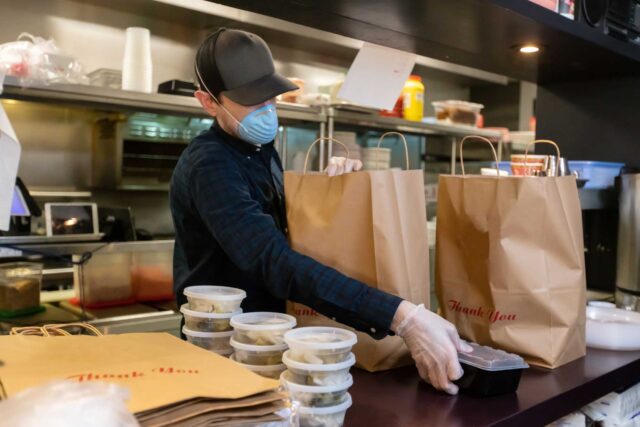The average monthly increase in California’s payroll employment from February to May 2021 was over 120,000, but even with this job growth, the economy has a long way to go. And despite record-high job openings, concerns remain around the number of underemployed and discouraged workers.
Service sectors continue to lead job recovery. In May, the hard-hit leisure and hospitality sectors comprised 60% of growth; other sectors also added jobs but at a slower pace. Compared to before the pandemic, jobs overall remain down by 7%, or 1.3 million, a level similar to the worst of the Great Recession—though we’re on track for a faster recovery.
It’s uncommon for hard-hit sectors to lead the way out of recession, yet the fastest job growth has been in service sectors. Still, jobs there remain down by 24%. The reopening this month and increase in vaccination are expected to grow jobs in months to come. However, questions remain about fundamental shifts brought on by the pandemic; as businesses seek to hire, California’s labor market recovery will hinge on a number of margins.
Labor force participation remains well below pre-pandemic levels. About half a million fewer Californians are employed or looking for work. This number barely inched up in May by 0.07%, or 12,000 persons, which leaves labor force participation well below historical levels.
Though some Californians may have left the labor force permanently—for example, those who retired —many want to work, but are not looking. These workers are categorized as “discouraged or marginally attached to the labor force.” They may represent an important pool of workers poised to rejoin the workforce this summer. We estimate that the number of discouraged or marginally attached workers in May, along with underemployed (working part-time but prefer full-time), is similar to those who remain unemployed.
Compared to one year ago, unemployment is down by about half while the share of underemployed, marginally attached, or discouraged workers is down slightly less than half. The latter is highest among low-income Californians, young workers, and Black and Latino workers. It is slightly higher among women than men, though women’s unemployment is lower. Underemployment in the hardest-hit service sectors is at least double the rate in other sectors.
Workers who are unemployed long-term face more challenges returning to work, as do those who’ve been detached from the labor force for some time. Though unemployment insurance and stimulus actions have sustained many workers over the past year, some of these supports will come to an end soon—or now require additional job searches.
An influx of job openings may create opportunities but has no promise to be equitably distributed. Some data suggests more job openings in construction and manufacturing than in service sectors and fewer in the Bay Area compared to all large metros nationwide. And job recovery for the hardest-hit sectors is tied to other trends in the economy. In particular, service sector work in downtown business districts in cities such as in San Francisco and Los Angeles depends on workers returning to downtown offices. At the same time, turnover nationally has been quite high, perhaps reflecting pent-up desires to change jobs.
It will take time for broader patterns to emerge around hiring and job search decisions. Meanwhile, many workers—especially low wage workers—may need near-term income support and access to job search and job training to support their return to a labor market transformed by the pandemic.






